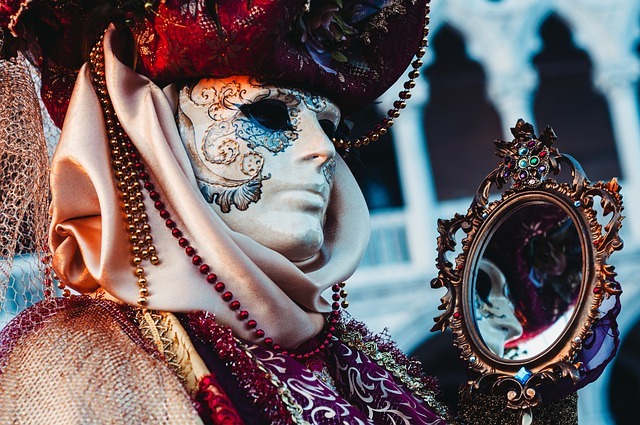Carnival is a time of exuberance, color, and joy, celebrated with unparalleled enthusiasm in various parts of the world. Among the most famous are the iconic carnival celebrations in Rio de Janeiro and Venice. These two festivals, although distinct in their traditions and expressions, share a common thread of uniting people through music, dance, and elaborate costumes. In this article, we delve into the magic of these iconic carnival celebrations, exploring their history, cultural significance, and the vibrant experiences they offer.
The Allure of Rio Carnival
The Rio Carnival in Brazil is undoubtedly one of the most famous and largest carnival celebrations in the world. Taking place annually before Lent, this festival attracts millions of visitors who come to witness the grand parades, samba performances, and street parties.
The Origins of Rio Carnival
Rio Carnival has its roots in the Portuguese tradition of Entrudo, where people would throw water, mud, and food at each other in a playful manner. Over time, this evolved into a more organized and elaborate celebration, heavily influenced by African, indigenous, and other European cultures. The introduction of samba music and dance in the early 20th century transformed Rio Carnival into the spectacular event it is today.
Highlights of Rio Carnival
- Samba Parades: The highlight of Rio Carnival is the Samba Parade, held at the Sambadrome. Samba schools compete by presenting elaborate floats, vibrant costumes, and synchronized dance routines, all set to infectious samba rhythms.
- Street Parties (Blocos): Throughout Rio, numerous street parties or blocos take place, where locals and tourists alike dance, sing, and celebrate in the streets. Each bloco has its own theme and style of music, ranging from traditional samba to contemporary beats.
- Costumes and Masks: Participants don intricate costumes and masks, often inspired by Brazilian folklore, mythology, and popular culture. The use of feathers, sequins, and bright colors adds to the visual spectacle of the carnival.
The Elegance of Venice Carnival
In contrast to the vibrant and loud celebrations of Rio, the Venice Carnival in Italy is known for its elegance, mystery, and historical charm. Held in the weeks leading up to Lent, Venice Carnival is a time when the city transforms into a stage for masked balls, theatrical performances, and lavish costumes.
The Origins of Venice Carnival
Venice Carnival dates back to the 12th century and was a time for the city’s residents to indulge in festivities and disguise themselves with masks, allowing them to socialize freely regardless of social status. The tradition of mask-wearing became a defining feature of Venice Carnival, symbolizing freedom and anonymity.
Highlights of Venice Carnival
- The Grand Masquerade Balls: These exclusive events are the epitome of Venice Carnival, where attendees dress in elaborate period costumes and masks, and dance the night away in opulent palaces.
- The Flight of the Angel: This event marks the official opening of Venice Carnival. A young woman, selected as the ‘Angel,’ descends from the bell tower of St. Mark’s Basilica to the cheering crowds below.
- Street Performances and Parades: Throughout the city, street performers, musicians, and actors entertain visitors with a variety of shows. Parades featuring historical reenactments, musicians, and costumed characters add to the festive atmosphere.
Cultural Significance of Carnival Celebrations
Both Rio and Venice Carnivals are more than just grand parties; they hold deep cultural and historical significance. They are a celebration of identity, heritage, and community, allowing people to express themselves creatively and collectively.
Preserving Traditions
These carnivals play a crucial role in preserving cultural traditions and passing them down through generations. The music, dance, costumes, and rituals are all integral parts of the cultural fabric of Brazil and Italy, respectively.
Social and Economic Impact
Carnivals also have significant social and economic impacts. They attract millions of tourists, boosting local economies and creating opportunities for artists, performers, and craftsmen. The sense of community and shared celebration strengthens social bonds and fosters a spirit of inclusivity and joy.
Tips for Experiencing Iconic Carnival Celebrations
To fully immerse yourself in the magic of these iconic carnival celebrations, consider the following tips:
- Plan Ahead: Both Rio and Venice Carnivals are incredibly popular, so it’s essential to plan your trip well in advance. Book your accommodations, tickets for events, and any necessary costumes early.
- Participate in Local Traditions: Engage with the local culture by learning some basic samba steps for Rio or attending a mask-making workshop in Venice. Participating in these traditions enhances your experience and shows respect for the culture.
- Respect the Environment: Carnivals can generate a lot of waste. Be mindful of your environmental impact by using reusable items, disposing of waste properly, and supporting eco-friendly vendors.
- Stay Safe: Large crowds and festivities can sometimes lead to safety concerns. Keep an eye on your belongings, stay hydrated, and be aware of your surroundings.
- Capture the Moments: Bring a camera to document your experiences, but remember to live in the moment as well. Some of the best memories come from fully engaging in the festivities.
Iconic carnival celebrations like those in Rio de Janeiro and Venice offer a unique blend of cultural heritage, artistic expression, and communal joy. Whether you’re dancing to the rhythm of samba in Rio or donning a mask and costume in Venice, these festivals provide unforgettable experiences that celebrate the richness of human culture. By embracing the traditions and spirit of these carnivals, you become part of a global community that values creativity, celebration, and connection.


